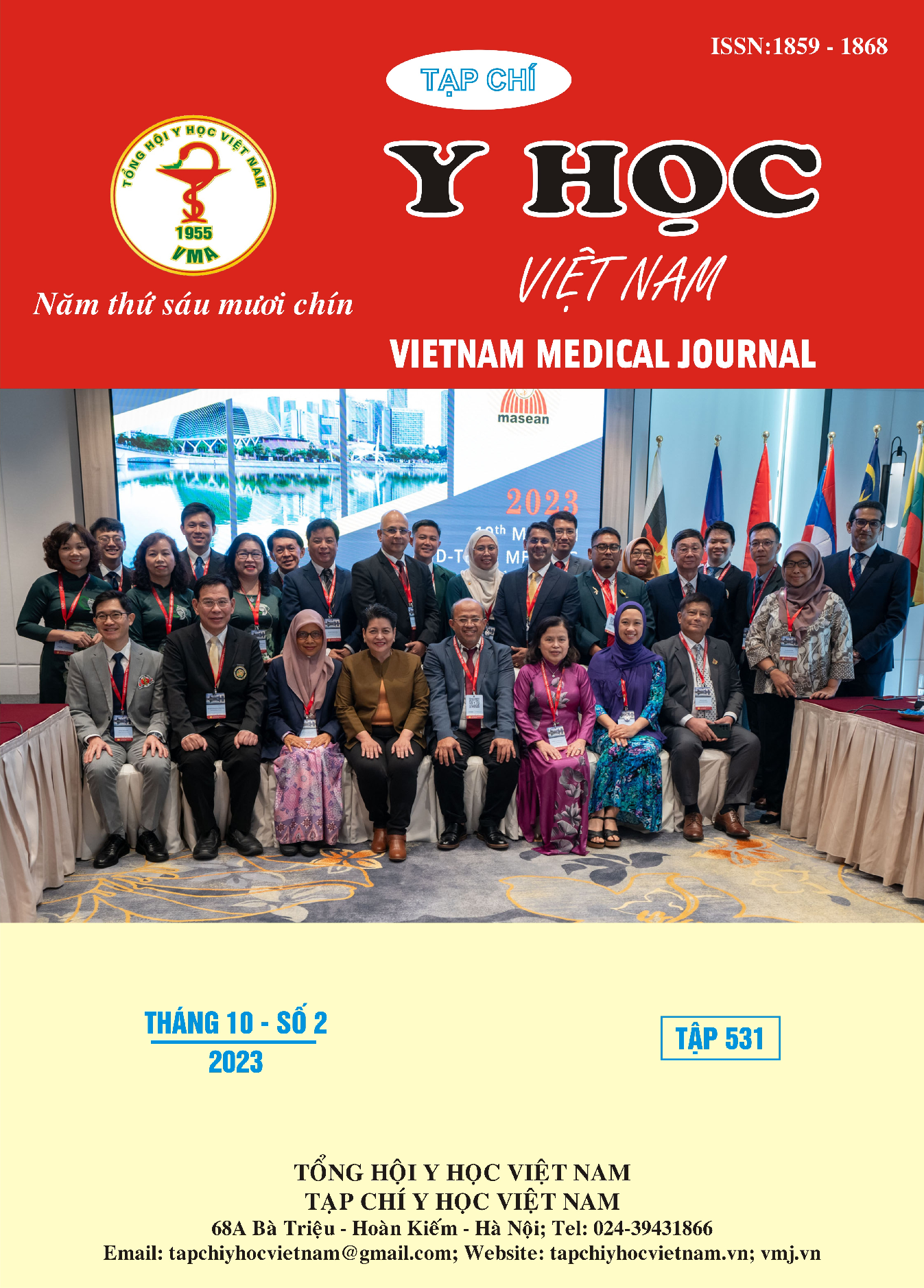CRANIOFACIAL FEATURES OF VIETNAMESE PATIENTS WITH BIMAXILLARY PROTRUSION: A CEPHALOMETRIC STUDY
Main Article Content
Abstract
Objective: This study aimed to investigate the craniofacial features of adult Vietnamese patients with bimaxillary protrusion. Methods: Lateral cephalometric images were obtained from 130 Vietnamese adults (86 females and 44 males) diagnosed with bimaxillary protrusion at the Dental Clinic of the University of Medicine Pham Ngoc Thach. The lateral cephalometric X-rays of these patients were analyzed using Steiner and Ricketts' methods. Twelve measurements describing the most significant points of the bimaxillary protrusion malocclusion were recorded. These measurements were compared with a control group of adults with normal Class I occlusion using independent t-tests. Results: Compared to individuals with normal Class I occlusion, those with bimaxillary protrusion showed 8 significantly different characteristics (p < 0.05) and 2 characteristics with no significant difference (p > 0.05). The most noteworthy differences were related to the protrusion and inclination of the upper and lower incisors (p < 0.001). Conclusion: Adults with bimaxillary protrusion have protruding lips and incisors compared to individuals with Class I occlusion.
Article Details
Keywords
bimaxillary protrusion, Vietnamese adults, cephalometric analysis
References
2. Scott CR, Goonewardene MS, Murray K. Influence of lips on the perception of malocclusion. American journal of orthodontics and dentofacial orthopedics: official publication of the American Association of Orthodontists, its constituent societies, and the American Board of Orthodontics. 2006;130(2):152–62.
3. Trudee H. Bimaxillary Protrusion: Prevalence and Associated Factors in the Trinidad and Tobago Population. Acta Scientific Dental Sciences. 2018;2(12):110-6.
4. Abida I, Amna S, Junaid I. Lip morphology : A factor leading to bimaxillary dentoalveolar protrusion. Pakistan Oral and Dental Journal. 2011; 31(2): 321-7.
5. Ismael AJ. Cephalometric Characteristics of Bimaxillary Protrusion in Adolescents. Al – Rafidain Dent J. 2012;12(1):135-41.
6. Anh T, Dang T, An N, et al. Cephalometric norms for the Vietnamese population. APOS Trends Orthod. 2016;6:200‑4.
7. Nguyễn Thị Bích Ngọc. Nghiên cứu sự thay đổi hình thái mô cứng, mô mềm của khuôn mặt sau điều trị chỉnh răng lệch lạc khớp cắn angle I, vẩu xương ổ răng hai hàm có nhổ răng. Luận án tiến sĩ Y học. Trường Đại Học Y Hà Nội; 2015.
8. Lahlou K, Bahoum A, Makhoukhi MB, et al. Comparison of dentoalveolar protrusion values in Moroccans and other populations. Eur J Orthod. 2010;32(4):430-4.


